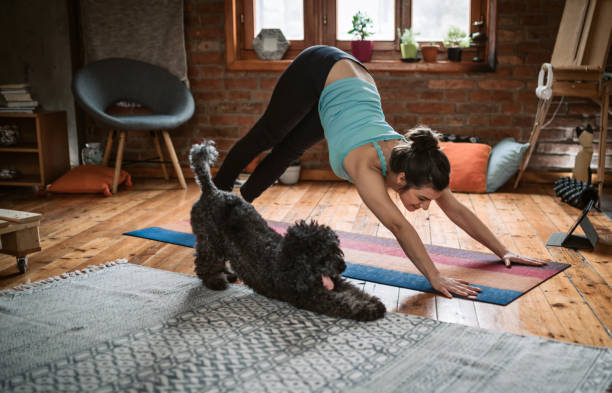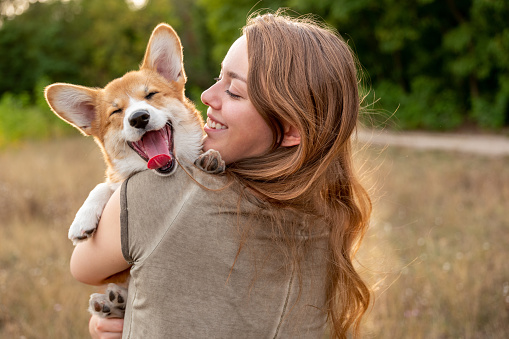Did you know that “Psychology” refers to the science of behavior and how the brain works. “Dog psychology” includes how dogs think, interact, and bond with each other as well as humans. Dog behaviorists offer valuable insight on how dogs think and form bonds.

In life people are going through different emotions. At the moment my partner is visiting her family. My little Yorkshire terrier is attached to my partner and is always looking for her other mother.
My Yorkshire Terrier’s behavior has made me wonder whether dogs have emotions, and if so, what kind of emotions do they have? Is there a reason why your dogs are so close to you when you are not feeling like yourself?
You love your furry friend, and probably already know that dogs experience a couple of emotions. Yet, there may be more going on than you realize. At times, dogs have lots going on inside.

Having the ability to recognize your furry friends’ feelings can help you feel closer. If your furry friend is afraid, frustrated, or anxious, being able to recognize their emotions can go a long way in helping them to feel better.
While we can look at their behaviors and scan their brains, we can’t be 100 percent sure how certain things affect their emotions. We are sure that dogs do feel emotions like frustration, anxiety, joy, relaxation, anticipation, and fear.
Dogs definitely experience emotions which we can see displayed on the outside through their body language. In this article, I’m going to take a closer look at dogs and what kind of emotions they do feel.

11 Emotions That You Didn’t Realize Dogs Could Feel
- Fear
Many dogs come off as super being brave, as they bark out of the windows and jump up on strangers. Dogs are capable of feeling fear.
For a dog, fear is one of the ancient emotions. Without fear, animals are less likely to change their behavior in a way that saves their lives.
Fear is one emotion that is useful for dogs. And when you know what to look for, fear is easy to spot. Dogs do display fearful postures including:
- tucking their tail
- pinning back their ears
- rolling on their back
- shifting their weight backward
- defensive aggression like snapping, snarling, and lunging.

- Frustration
Just like people do, dogs can feel the annoying sensation of frustration. With frustration comes a whole host of behaviors, like whining, barking, and yes also pacing. Usually, dogs who don’t know how to ask for something and are incapable of getting what they want experience frustration.
Not all dogs know that they should stand by the backdoor to be let outside to pee. For example, your dog might ask or pace instead, as a sign of their frustration. Communicating with your dog will help both of you feel less frustrated.

- Anxiety
Dogs also experience anxiety, especially if they had any sort of trauma in their past. Dogs that are anxious can’t relax after a minor disturbance. So how do you identify whether your dog is struggling with anxiety?
Dogs that are anxious often pant with their lips pulled far back, their eyes wide open, and their ears are pulled back. Some dogs may even pace around, have dilated pupils, fall asleep at strange times as a way of dealing with their anxiety.
If you notice any of these symptoms of anxiety in your dog, be sure to let your veterinarian know. There are a lot of ways that dogs who are struggling with anxiety can feel better.

- Joy
There is nothing better than coming home after a long day, and having your furry friend running towards you. Your furry friend will greet you with great enthusiasm and pure joy that you may sadly miss.
Dogs that are feeling joy tend to prance, pounce, and huff. Next time you get home watch your dogs behaviour and learn to spot a joyful dog.

- Relaxed
Picture that your dog is lying and stretching out on your couch, this is a sign that they are enjoying a moment of bliss and relaxation. Dogs that are relaxed or relaxing, may tend to display the following behaviours:
- Sighing
- Rolling over onto a hip while they are lying down
- Stretching
Dogs that are relaxed may sleep stretched out, and may be comfortable enough to take up most of the couch. If your dog is doing this these are all signs that your furry friend is feeling relaxed, safe and secure.

- Anticipation
Have you ever looked at your furry friend that is waiting for you to go on a walk? Their behaviour at this time is your dog feeling heaps of anticipation. The most obvious instances of anticipation can be seen when your furry friend knows that they are about to be played with.
When dogs are filled with anticipation they may prance, whine, or freeze. This behaviour will vary from dog to dog, as each dog is different. The emotions that your dog is feeling can play out in different ways, depending on their temperament, personality, and their breed.

- Love/Attachment
Dog psychologists’ knowledge is currently limited, but there is evidence to suggest, and lots of real-life stories which reveal a dog is capable of love. Dogs produce oxytocin, and their owners have now been confirmed to increase with positive interaction, call it love if you will, and joy.
It can be helpful to be on the lookout for signs of comfort in your dog to learn whether your dog feels love. You can also do a consent test by petting your dog for a few seconds and then pausing to watch his response.
If your dog moves closer to you, this shows that their body language is relaxed, and/or leans into you. That is a great sign that your dog is enjoying the attention and wants more.

- Surprise
Like joy, surprise is another emotion that you can see when you come home from work. Have you ever seen a dog jumping and spinning when they see their human again after time apart? These dogs are surprised, and their body language tells you so right away. They can go from calm to super-happy in a blink of an eye.

- Jealousy
Dogs don’t feel jealousy exactly the same as humans do, and they do display jealous-like behaviors. Dogs can be jealous because of many things, but a more common term for this would be guarding.
Guarding in essence is the desire to keep something for itself. You may find that your dog guards their bed, toys, bones, and even their owners.
Jealousy may play out in many ways, like aggressive behavior. Displays of jealousy can vary from a grumble to an attack, to deter other pets or people who may be threatening the dog’s treasures.
Your furry friend’s treasure may be their toys, bones, or even their owners. The dog may hide or hoard a physical item so keep it to themselves. Jealousy is more like possessiveness when it comes to dogs.

- Depression/Sadness
Like people, dogs do have the desire to feel content. Your furry friend also wants to have all their needs met and they feel a natural balance inside on an emotional level.
Dogs can also feel sad, like us humans, when they don’t get what they want. Dogs can’t rationalize why they feel depressed, as you might think. Dogs do sense change and this can be seen in behaviour that we might refer to as depressive.
A depressed dog may sleep more, and will show signs of being withdrawn. A depressed dog may also exhibit new behaviors such as barking at night or when they are being left alone.

- Loneliness
Dogs can be left alone for periods of time without acting out. However some dogs are prone to feeling lonelier than others. If your furry friend is feeling this way, they will let you know that something is not right.
If your furry friend is lonely, they might try barking or howling when they are left alone. Your dog may also become destructive due to increased stress levels. If you are not sure how to make your furry friend feel better, don’t hesitate to go to the veterinarian and ask what is best for your dog.

Let Your Furry Babies Express Themselves Freely
So there just like you and I, our furry friends have emotions. So yes dogs do have emotions and are not afraid to show them.
Dogs have an entire inner world that we are slowly beginning to uncover and become familiar with. Believe it or not dogs do their best to “say” what they are thinking.

Knowing what to look for in your dog’s behaviors can help you to reveal what is going on inside their cute amazing heads. You can begin to understand your dog so much more.
Thank you for visiting our blog, where home is not a home without furry friends. Please be sure to like and share! Thank you for your ongoing support.

